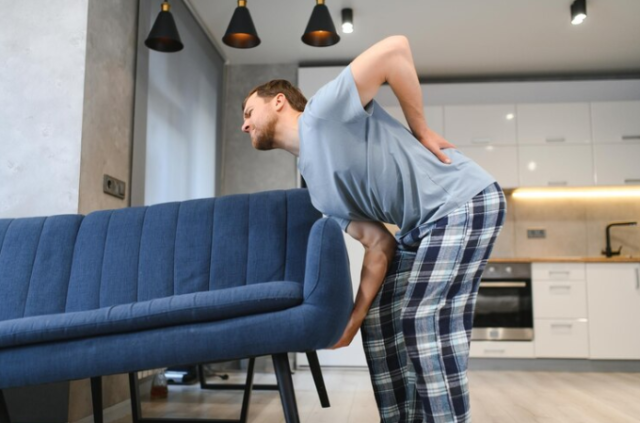
Synovial cysts in the spine are a common cause of back pain and discomfort. These fluid-filled sacs can develop in the spine’s synovial joints, which are responsible for providing flexibility and support. While synovial cysts can occur in any part of the spine, they are most commonly found in the lumbar region. These cysts can vary in size and may put pressure on nearby nerves, leading to symptoms such as pain, numbness, and weakness. Understanding the causes of synovial cysts is crucial in developing effective treatment strategies.
Understanding the anatomy of the spine
To comprehend the causes of synovial cysts, it is essential to have a basic understanding of the anatomy of the spine. The spine is composed of 33 vertebrae, which are stacked on top of each other, forming a flexible column. Between each vertebra are intervertebral discs, which act as shock absorbers. The spine is also made up of synovial joints, which allow for smooth movement and flexibility. These joints are lined with a synovial membrane that produces a lubricating fluid called synovial fluid. When this fluid leaks out of the joint, it can accumulate and form a synovial cyst.
Common symptoms of synovial cysts
Synovial cysts in the spine can cause a variety of symptoms, depending on their size and location. The most common symptom is localized back pain, which may radiate to the buttocks or legs. The pain is typically aggravated by activities that put pressure on the spine, such as bending or lifting. In some cases, synovial cysts can compress nearby nerves, leading to additional symptoms such as numbness, tingling, and weakness. These symptoms can significantly impact a person’s quality of life and may require medical intervention.
Causes and risk factors of synovial cysts
The exact cause of synovial cysts in the spine is still unknown. However, several factors are believed to contribute to their development. Degenerative changes in the spine, such as osteoarthritis, can lead to the formation of synovial cysts. As the joints degenerate, the synovial fluid may leak out and form cysts. Additionally, trauma or injury to the spine can also cause synovial cysts to develop. Other risk factors include age, as synovial cysts are more common in older individuals, and genetics, as there may be a hereditary component to their formation.
Diagnosing synovial cysts in the spine
Diagnosing synovial cysts in the spine typically involves a combination of medical history, physical examination, and imaging tests. The doctor will first assess the patient’s symptoms and medical history to determine if a synovial cyst is the likely cause. A physical examination may reveal tenderness or a palpable mass in the affected area. To confirm the diagnosis, imaging tests such as X-rays, MRI scans, or CT scans may be ordered. These tests can provide detailed images of the spine and reveal the presence of a synovial cyst.
Treatment options for synovial cysts
The treatment of synovial cysts in the spine depends on the severity of symptoms and the impact on the patient’s daily life. In some cases, conservative treatments may be sufficient to alleviate symptoms. These can include rest, physical therapy, pain medication, and steroid injections to reduce inflammation. However, if conservative treatments fail to provide relief, surgical intervention may be necessary.
Surgical procedures for removing synovial cysts
Surgical removal of synovial cysts in the spine is typically performed using minimally invasive techniques. The surgeon will make a small incision in the back and use specialized instruments to remove the cyst. In some cases, the cyst may be drained and then removed. The goal of surgery is to decompress the affected nerves and alleviate symptoms. Following the procedure, the incision will be closed, and the patient will be monitored during the recovery process.
Recovery and rehabilitation after surgery
After the surgical removal of a synovial cyst, the patient will require a period of recovery and rehabilitation. This may involve physical therapy to improve strength and flexibility in the spine. Pain medication may be prescribed to manage any postoperative discomfort. The length of the recovery period will vary depending on the individual and the extent of the surgery. It is important to follow the doctor’s instructions and attend follow-up appointments to ensure proper healing and a successful outcome.
Preventing synovial cysts in the spine
While it may not be possible to prevent synovial cysts entirely, certain lifestyle modifications may help reduce the risk. Maintaining a healthy weight and engaging in regular exercise can help keep the spine strong and flexible. Avoiding activities that put excessive strain on the spine, such as heavy lifting or repetitive bending, may also be beneficial. Additionally, practicing good posture and using proper body mechanics when performing daily tasks can help minimize the risk of developing synovial cysts.
Conclusion
Synovial cysts in the spine can cause significant discomfort and impact a person’s quality of life. Understanding the causes of these cysts is crucial in developing effective treatment strategies. While the exact cause is still unknown, degenerative changes in the spine and trauma are believed to contribute to their development. Diagnosis typically involves a combination of medical history, physical examination, and imaging tests. Treatment options include conservative measures and surgical intervention, depending on the severity of symptoms. By maintaining a healthy lifestyle and practicing good posture, it may be possible to reduce the risk of developing synovial cysts in the spine. If you are experiencing back pain or other symptoms, consult with a healthcare professional for an accurate diagnosis and appropriate treatment.
Looking for relief from severe back pain from a past injury or failed surgery? Dr Rosenstein is the leading spinal neurosurgeon in Arlington, Texas. He focuses on smooth and successful surgeries with positive outcomes. Call today for a consultation.
